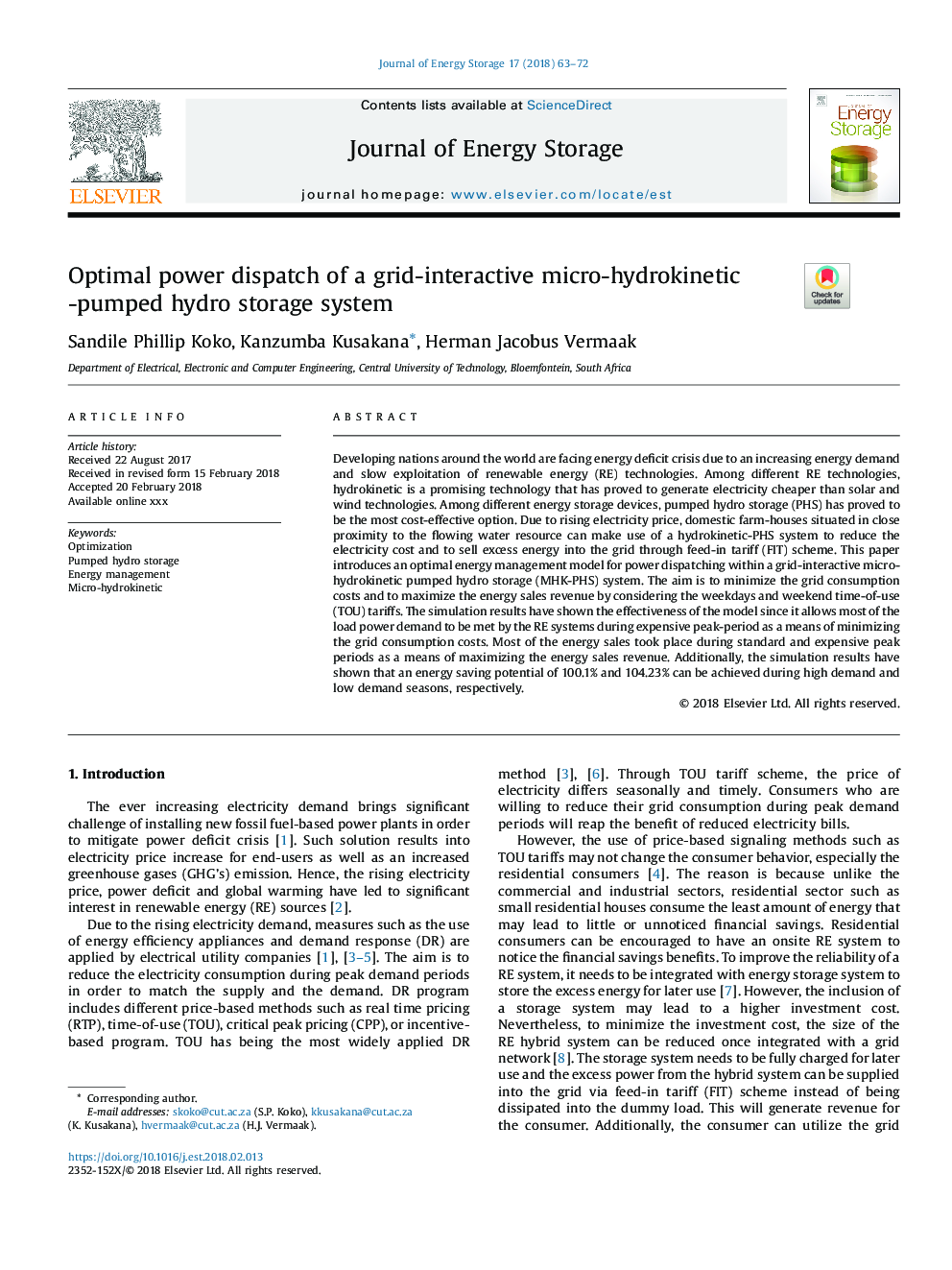| Article ID | Journal | Published Year | Pages | File Type |
|---|---|---|---|---|
| 7539861 | Journal of Energy Storage | 2018 | 10 Pages |
Abstract
Developing nations around the world are facing energy deficit crisis due to an increasing energy demand and slow exploitation of renewable energy (RE) technologies. Among different RE technologies, hydrokinetic is a promising technology that has proved to generate electricity cheaper than solar and wind technologies. Among different energy storage devices, pumped hydro storage (PHS) has proved to be the most cost-effective option. Due to rising electricity price, domestic farm-houses situated in close proximity to the flowing water resource can make use of a hydrokinetic-PHS system to reduce the electricity cost and to sell excess energy into the grid through feed-in tariff (FIT) scheme. This paper introduces an optimal energy management model for power dispatching within a grid-interactive micro-hydrokinetic pumped hydro storage (MHK-PHS) system. The aim is to minimize the grid consumption costs and to maximize the energy sales revenue by considering the weekdays and weekend time-of-use (TOU) tariffs. The simulation results have shown the effectiveness of the model since it allows most of the load power demand to be met by the RE systems during expensive peak-period as a means of minimizing the grid consumption costs. Most of the energy sales took place during standard and expensive peak periods as a means of maximizing the energy sales revenue. Additionally, the simulation results have shown that an energy saving potential of 100.1% and 104.23% can be achieved during high demand and low demand seasons, respectively.
Related Topics
Physical Sciences and Engineering
Energy
Energy (General)
Authors
Sandile Phillip Koko, Kanzumba Kusakana, Herman Jacobus Vermaak,
